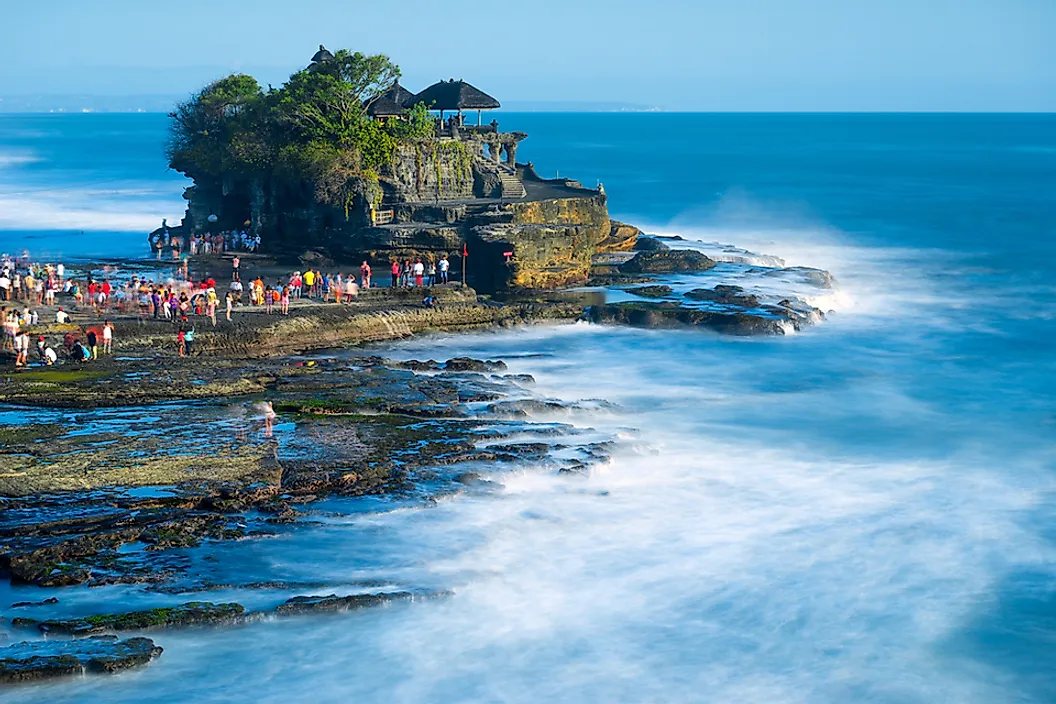What and Where Is Tanah Lot?

Tanah Lot is a large offshore rock formation that is situated on the island of Bali, Indonesia, about 12 miles from the city of Denpasar and 8 miles from the city of Tabanan in Kediri. The name, “Tanah Lot,” translates to mean “Land in the Sea.” The famous geological feature is bordered by the Indian Ocean and has been shaped by wave action for thousands of years to form a picturesque rock formation that is considered a cultural icon among photographers around the globe. However, the rock's global fame comes from the Tanah Lot Temple, an ancient temple that sits on the Tanah Lot rock. The temple is one of the seven temples situated along the coastline of Bali.
The Temple
The Temple of Tanah Lot is an ancient place of worship built on the Tanah Lot offshore rock. The temple is locally known as the “Pura Tanah Lot” which translates to “the temple of Tanah Lot.” While the temple of Tanah Lot is considered a Hindu pilgrimage temple, its origin is based on ancient Balinese mythology. According to local legend, the temple’s construction was commissioned by Dang Hyang Nirartha in the 16th century. Dang Hyang Nirartha was a prominent Hindu figure and traveler, who is credited with founding the Shaivite priesthood. According to legend, Dang Hyang once visited the rock and rested on it, admiring its beauty and later instructed fishers who visited him on Tanah Lot to build a shrine on it, which would be used to worship the ancient Hindu sea deities. Dewa Baruna, the god of the sea, is the primary deity worshiped at the Tanah Lot temple, and Dang Hyang also being worshipped.
Tourism
The historical significance of the temple makes Tanah Lot a prime tourist destination on the island. Thousands of tourists visit the site each year, attracted by the cultural heritage the temple represents, as well as the picturesque nature of the site. Local visitors are required to pay about $1 to enter the site, while foreign tourists pay about $4.5 to tour the temple. The road that leads to the temple is lined with souvenir shops where local Bali merchants sell beautiful artifacts. There are also numerous restaurants at the site where visitors can sample local Bali cuisine.
Restoration
The rock began to show signs of weathering in the late 20th century, and by the 1980s, sections of its face had started to crumble. The problem had been aggravated by increased human activity on the site in recent years. The crumbling rock placed the temple in serious threat of collapsing and made visiting the temple a dangerous affair. The Indonesian government received a grant worth about $120 million from Japan to restore the temple as well as other cultural sites in the island. The restoration work involved the formation of an artificial rock to offer additional support for the temple. The artificial rock is well-camouflaged and resembles natural rock both in color and texture.











